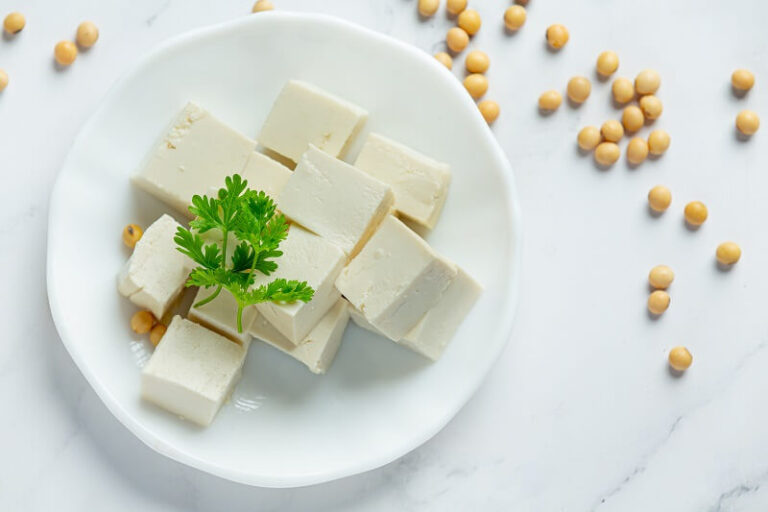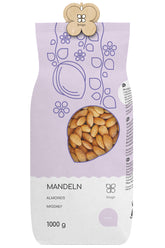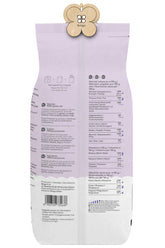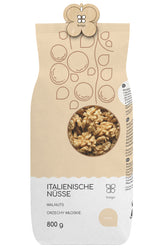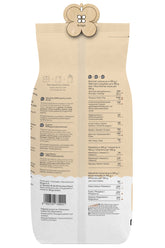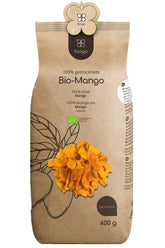Fer héminique et fer non héminique : que se passe-t-il dans ces substances ?
Contenu:
- Quelle est la quantité de fer dans le corps ?
- Quelles fonctions le fer remplit-il dans notre corps ?
- Fer héminique et fer non héminique – principales différences
- Les meilleures sources de fer dans l'alimentation
- Qui est à risque de carence en fer et quelles en sont les conséquences ?
- Que faire en cas de carence en fer ?
- Qui ne devrait pas consommer des quantités excessives d’aliments riches en fer ?
Le fer est un minéral qui détermine de nombreux processus dans notre corps. Il est donc très important de l’apporter à l’organisme par l’alimentation. Il convient de mentionner que ce microélément est relativement mal absorbé par notre corps. Il est donc utile de connaître les produits particulièrement riches en vitamine C et les moyens d’en augmenter l’absorption. Ajoutons qu’il existe deux types de fer de base : le fer héminique et le fer non héminique. Ils diffèrent les uns des autres et se retrouvent dans différents produits. Nous allons donc aborder ce sujet et tenter d’expliquer les problèmes fondamentaux liés au fer.
Quelle est la quantité de fer dans le corps ?
On estime que le corps d’un adulte moyen contient environ 3,5 à 4,3 grammes de fer. Environ 3 grammes de ce microélément sont nécessaires à son bon fonctionnement. Près de 60 à 70 % de la quantité totale de cet élément est liée à l’hémoglobine, un composant des globules rouges (érythrocytes). 6 % supplémentaires sont constitués de myoglobine et de diverses enzymes, tandis que 20 à 30 % se trouvent principalement dans les hépatocytes et les macrophages hépatiques. Des traces de fer sont également présentes dans la transferrine.
Quelles fonctions le fer remplit-il dans notre corps ?
Nous n’avons certainement pas besoin de convaincre qui que ce soit que le fer est extrêmement important pour le bon fonctionnement du corps humain. Il joue un rôle majeur dans le transport de l’oxygène et son acheminement vers les muscles et tous les organes. Il fait partie de l'hémoglobine et lui permet de lier les molécules d'oxygène lorsque le sang circule dans les poumons, assurant ainsi un apport adéquat en oxygène à l'ensemble du corps. Sa présence dans la myoglobine, une protéine présente dans les muscles, joue également un rôle important. Cela permet à nos muscles de stocker de l’oxygène. Le fer participe également à la production de globules rouges dans la moelle osseuse rouge. Ajoutons qu’il est également un composant important de nombreuses enzymes, notamment les cytochromes, les catalases et les peroxydases. Il n’est pas moins important pour le bon fonctionnement du système nerveux ou du système immunitaire. C'est le fer qui peut activer les cellules immunitaires. De plus, il participe à la détoxification du foie et soutient la lutte contre les radicaux libres de l'oxygène. Cependant, l'absorption de ce microélément se produit dans le duodénum et l'intestin grêle. Une fois que cela se produit, il est lié par la muqueuse intestinale à l’aide de l’apoferritine puis transporté dans le sang par la transferrine. Il convient de souligner que notre corps peut les stocker dans le foie, entre autres. Cela se produit sous forme de ferritine et d’hémosidérine.
Fer héminique et fer non héminique – principales différences
Le fer héminique ne peut être que d’origine animale. C'est parce qu'il se présente sous forme d'hémoglobine et de myoglobine. Les produits de ce type contiennent jusqu’à 45 % de fer hémique, tandis que le reste est du fer non hémique. Il convient toutefois de noter que sa biodisponibilité ne dépasse normalement pas 35 %, mais l’absorption est constante. La situation est complètement différente avec le fer non héminique. Bien qu’il s’agisse d’un composant important des produits animaux, c’est la seule forme de cet élément que l’on retrouve dans les produits végétaux. Il est absorbé significativement moins que son prédécesseur, puisque son absorption est comprise entre 1 et 20 %. Il convient de noter qu’elle n’est pas constante et dépend de facteurs externes. Par exemple, boire du café ou du thé juste avant un repas peut réduire l’absorption du fer jusqu’à 60 %. Mais ce n’est pas tout, car d’autres substances possèdent de telles propriétés. Il s’agit notamment des fibres, de l’acide phytique, de l’acide oxalique, des tanins, des polyphénols et même des protéines de lactosérum. La question se pose de savoir si sa digestibilité peut être augmentée de quelque manière que ce soit ? La réponse est, bien sûr, absolument. La solution la plus simple est de consommer des produits riches en fer qui contiennent également beaucoup de vitamine C. Vous pouvez également faire tremper certains produits avant de les consommer. Cela augmente l’absorption. Les exemples incluent : les noix, les céréales, les haricots et les fraises. Cela élimine les composés qui ont un effet négatif sur l’absorption du fer. De plus, des substances telles que le cuivre, l’acide folique et diverses épices (curcuma, thym, basilic, cannelle, paprika) peuvent influencer positivement l’absorption de cet élément grâce à leur effet antioxydant.
Les meilleures sources de fer dans l'alimentation
Les sources de fer particulièrement bonnes d'origine animale sont :
- Bœuf – 44,55 mg/100 g
- Agneau – 41,81 mg/100 g
- Foie de canard – 30,53 mg/100 g
- Porc – 22,32 mg/100 g
- Foie de porc – 18,7 mg/100 g
- Caviar – 11,7 mg/100 g
- Sous-produits de volaille – 9,5 mg/100 g
- Oie – 2,4 mg/100 g
- Œufs de poule – 2,2 mg/100 g
- Canard 2,1 mg/100 g
Les sources végétales de fer particulièrement bonnes sont :
- Graines de citrouille – 15 mg/100 g
- Cacao – 10,7 mg/100 g
- Tofu – 9,7 mg/100 g
- Haricots blancs – 6,9 mg/100 g
- Lentilles rouges – 5,8 mg/100 g
- Feuille de persil – 5,3 mg/100 g
- Millet – 4,8 mg/100 g
- Petits pois – 4,7 mg/100 g
- Graines de tournesol – 4,2 mg/100 g
- Amandes – 3 mg/100 g
Qui est à risque de carence en fer et quelles en sont les conséquences ?
Le simple fait que le fer soit absorbé relativement peu par rapport aux autres minéraux nous rend vulnérables à une carence en fer. Il existe cependant des cas où la probabilité de tels goulots d’étranglement est en réalité assez élevée. Les femmes, en particulier les femmes enceintes, doivent accorder une attention particulière au contenu de cet élément dans leur alimentation quotidienne. Au cours du cycle menstruel, également appelé menstruation, elles perdent des quantités importantes de fer. De plus, le fer a un impact significatif sur le développement du fœtus et influence les caractéristiques cognitives ultérieures de l’enfant. Il s’agit notamment de la mémorisation, des processus d’apprentissage et de la concentration. En effet, le développement du cerveau dépend également d’un apport adéquat de cet élément. De plus, la carence en fer est l’une des maladies hématologiques les plus courantes dans la société actuelle. Cette situation s’accompagne souvent d’anémie. Cette condition peut ensuite se transformer en anémie, entraînant une diminution de la concentration d’hémoglobine dans le sang, du nombre de globules rouges et de l’hématocrite. Cela peut entraîner divers effets secondaires, notamment : des étourdissements, une faiblesse physique, une fatigue chronique et des difficultés de concentration. L’état des cheveux, de la peau et des ongles peut également se détériorer et des évanouissements peuvent même survenir. On estime qu’environ 30 % des femmes souffrent d’une carence en fer, et chez les femmes enceintes, ce chiffre peut atteindre 40 %.
Que faire en cas de carence en fer ?
Théoriquement, en cas de carence en fer, l’apport de produits riches en ce microélément devrait être augmenté. Cependant, en raison de la faible biodisponibilité, cela peut ne pas être suffisant. Il est donc judicieux de compléter son apport en fer sous forme de sulfate de fer. La dose standard est d’environ 200 mg de ce produit chimique par jour. Cependant, gardez à l’esprit que cette dose est beaucoup plus faible pour les enfants. On suppose qu’il y a 4 mg de sulfate de fer par kilogramme de poids corporel. Ce type de supplémentation devrait durer entre 6 et 8 semaines environ. Après ce délai, les indicateurs hématologiques devraient s’améliorer. Faisons également attention à ce que nous buvons avec ces compléments. Le café , le thé ou le lait ne sont certainement pas un bon choix. L’eau bouillie normale fonctionne mieux. Nous devrions également essayer de prendre du sulfate ferreux à jeun , car de nombreux ingrédients alimentaires peuvent limiter l’absorption. Cependant, il existe des situations dans lesquelles un tel traitement n’est pas bien toléré par l’organisme. Dans de tels cas, des diarrhées, des nausées et même des vomissements peuvent survenir. Ces préparations doivent ensuite être prises après un repas.
Qui ne devrait pas consommer des quantités excessives d’aliments riches en fer ?
Il convient de noter qu'une surdose de fer est relativement difficile, cependant, nous ne devons pas en faire trop avec la quantité. Les patients atteints d’hémochromatose méritent une attention particulière. Cela peut avoir une base génétique ou secondaire. Cependant, cette maladie se caractérise par une absorption et un stockage excessifs du fer dans l’organisme. Malheureusement, notre foie possède un certain nombre de propriétés qui lui permettent d’accumuler des quantités relativement importantes de cet élément. Par conséquent, diverses maladies constituent une complication très courante. Cela peut à son tour conduire à une cirrhose de cet organe et même à un cancer. Ajoutons que l’hémochromatose non traitée conduit souvent à d’autres maladies telles que le diabète, l’insuffisance cardiaque, l’infertilité et la dégénérescence articulaire. Les patients souffrant de cette affection doivent donc surveiller de près leur apport en fer et être sous surveillance médicale stricte.
Résumé
Le fer est un élément très intéressant par rapport au fonctionnement de notre corps. Malheureusement, il est relativement difficile à digérer, nous devons donc veiller à en consommer la bonne quantité dans notre alimentation. Prêtons également attention aux différents symptômes de sa carence. Dans de tels cas, il est conseillé de commencer à compléter. En cas de doute, il est conseillé de consulter un médecin.
LE CHOIX DE L'ÉDITEUR
Amandes 1 kg BIOGO
- £11.00
£13.00- £11.00
- Prix unitaire
- / par
Noix 800 g BIOGO
- £8.00
£10.00- £8.00
- Prix unitaire
- / par
Mangue séchée bio 400 g BIOGO
- £10.00
- £10.00
- Prix unitaire
- / par
Mûres blanches séchées 500 g BIO
- £6.00
£7.00- £6.00
- Prix unitaire
- / par
Figues séchées bio 800 g BIOGO
- £27.00
- £27.00
- Prix unitaire
- / par
Gruau de sarrasin non décortiqué 1 kg BIOGO
- £3.00
£3.00- £3.00
- Prix unitaire
- / par
Noix de coco râpée bio 500 g BIOGO
- £9.00
- £9.00
- Prix unitaire
- / par
Flocons d'avoine bio 600 g BIOGO
- £4.00
- £4.00
- Prix unitaire
- / par
Noix de cajou bio 1 kg BIOGO
- £18.00
- £18.00
- Prix unitaire
- / par
Graines de chardon-Marie 1 kg BIOGO
- £4.00
- £4.00
- Prix unitaire
- / par




















































































































